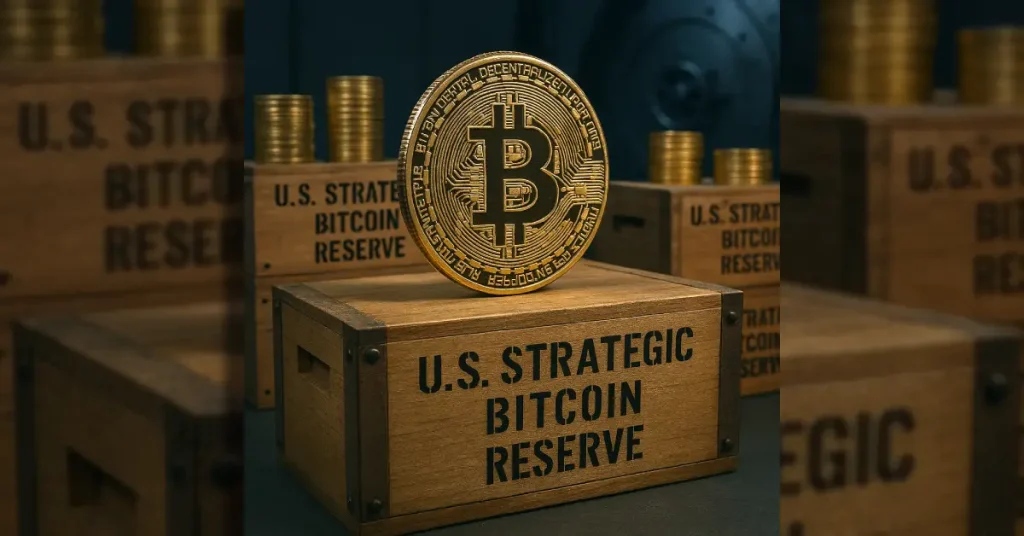Trump Strategic Bitcoin Reserve impact on non-owners: How the new U.S. crypto stockpile affects everyday people who don’t own Bitcoin yet—hidden costs, price shocks, and practical tips.
The phrase Trump Strategic Bitcoin Reserve impact on non-owners might sound like inside-baseball finance talk, but here’s the deal: even if you have zero interest in crypto, this new U.S. policy could quietly nudge grocery prices, mortgage rates, and even your tax bill. Below, we unpack why.
1. The 60-Second Recap: How Did We Get Here?
On March 2, 2025, President Trump announced via Truth Social that the United States would create a “crypto strategic reserve” built mainly from Bitcoin, Ethereum, XRP, Solana, and Cardano seized in criminal cases [^2^]. The twist? No new taxpayer dollars—at least for now. The goal is to hold the coins as a hedge against dollar instability, much like the country stockpiles oil or gold [^3^].
Markets initially cheered, pushing Bitcoin from ~$86 k to $94 k in hours, then cooled when traders realized the government wasn’t buying more coins—just parking the ones it already had [^4^].
2. The Hidden Chain Reaction for Non-Owners
2.1 Price Volatility Sneaks into Everyday Costs
Even if you never touch crypto, wild swings in Bitcoin bleed into mainstream finance:
- Treasury yields wobble. When Bitcoin drops 6 % overnight—as it did on March 7 [^8^]—bond traders move money around, nudging 10-year yields and, eventually, your mortgage rate.
- Corporate balance sheets. Tesla, MicroStrategy, and now the U.S. government all hold Bitcoin. Sudden drops can force them to mark down assets, cut dividends, or freeze hiring.
Practical tip: If you’re shopping for a home loan, lock in rates during crypto-quiet weeks (avoid major White House crypto summits).
2.2 Dollar Strength & Imported Goods
Trump’s reserve is framed as a hedge against dollar debasement. Ironically, the announcement alone strengthened the greenback as global investors viewed it as “America doubling down” on tech leadership. A stronger dollar means cheaper European cheese and Korean smartphones—great news for non-owners who love imported snacks.
2.3 Taxpayer Risk Without Direct Cost
While officials swear “no new taxes,” the executive order quietly asks Treasury and Commerce to craft “budget-neutral” ways to buy more Bitcoin [source]. Translation: creative accounting—possibly through Federal Reserve swap lines or asset rebalancing—that could still impact long-term fiscal health.
3. Hypothetical Scenario: Maria’s Grocery Run in Q4 2025
Meet Maria, a 34-year-old nurse who thinks crypto is “Monopoly money for billionaires.” She doesn’t know the U.S. now holds 200 k Bitcoin seized from Silk Road cases. In October 2025, rumors swirl that China will launch its own Bitcoin reserve. Prices double overnight. Two knock-on effects hit Maria:
- Gas jumps 8 ¢ per gallon because oil traders use Bitcoin as a proxy hedge.
- Her hospital’s pension fund—which recently added a 2 % crypto allocation—reports stellar gains, delaying Maria’s expected retirement age from 62 to 59. She’s thrilled, yet never bought a single satoshi.
4. Quick-Start Guide for the Crypto-Curious Non-Owner
Step 1: Track Indirect Exposure
Check if your 401(k) or pension now lists “digital asset” ETFs. If so, decide whether that 1–3 % slice fits your risk tolerance.
Step 2: Dollar-Cost Average a Tiny Test Amount
Platforms like Cash App or PayPal let you buy $10 of Bitcoin with two taps. Consider it a “stress-test” to understand volatility without betting the farm.
Step 3: Use Price Alerts, Not Headlines
Set a free Blockfolio alert for Bitcoin at $75 k and $110 k. Ignore the rest of the noise.
5. What’s Next? Questions to Ask Yourself
- Would you support a small “crypto line item” on your tax return if it promised lower long-term debt?
- How comfortable are you with the U.S. government becoming one of the world’s largest Bitcoin holders?
Sound off below: Share your biggest worry (or hope) about the Strategic Bitcoin Reserve in the comments!
6. Bottom Line
The Trump Strategic Bitcoin Reserve impact on non-owners isn’t a headline splash—it’s a slow drip affecting mortgage rates, grocery prices, and retirement timelines. Ignore it at your wallet’s peril, but don’t panic either. A 15-minute audit of your pension and a $10 micro-investment might be all you need to stay ahead of the curve.
Check out the resources above and drop your thoughts—let’s learn together!

